Hit a Plateau in Weight Loss or Workouts? Here’s How to Keep Seeing Results

So you’ve been on your journey to better health, working out and eating right, when BAM — you’ve hit a wall in your results. Somehow, things are just not progressing as before, and you’re starting to worry. Based on what you’ve heard before, it seems you’ve hit a plateau, but you’re unsure why it’s happening or how to fix it.
First, don’t panic or stress too much. There are many reasons someone might see a dip in their health and weight loss results, especially when they’ve been at it a while.
This article will cover what “hit a plateau” means, why plateaus happen, and how you can address them.
The Meaning of “Hit a Plateau”
“Hit a plateau” often means one of two scenarios in health and fitness:
- You’re stopped losing weight despite eating well and dieting.
- You’ve stopped seeing fitness or muscle gains from your strength or resistance training workouts.
In both situations, hitting a plateau means you’re no longer seeing results despite doing everything “right.”
Hitting a plateau can be perplexing if you’re not particularly knowledgeable on why plateaus happen and how to fix them. But that’s why we’re here.
How to Know You’ve Hit a Weight Loss Plateau
Signs of a weight loss plateau can include:
- You’re struggling to keep losing weight after some initial weight loss.
- You can’t get rid of those last few pounds (even though you’re working hard to lose weight).
- Despite eating well and working out, the scale doesn’t want to budge.
Signs You’ve Hit a Muscle-Building Workout Plateau
You might have hit a training plateau if:
- Your strength or muscle mass has stopped progressing in your workouts.
- You’ve stopped seeing results despite working out regularly.
- You’re experiencing higher levels of fatigue during or in between workouts.
Why Workout and Weight Loss Plateaus Happen
Fitness or weight loss plateaus might happen if you’re:
- Not training enough
- Overtraining
- Not eating enough calories
- Eating too many of the wrong calories
- Not changing up your workouts enough
- Changing your workouts too frequently
But also, there are times when a plateau isn’t actually a plateau. In fact, this is the most common scenario.
Often, a “plateau” happens because certain habits have waned or you’re not tracking something as close as you think. Other times, what you take as a plateau is a natural part of your progression.
Let us explain:
You’ve probably heard that progress is not linear. The phrase applies to many situations in life, including workout and weight loss goals.
Life might happen and slow your healthy progress at certain times. But beyond that, weight loss and fitness gains naturally slow down as you progress.
For example, someone with a lot of weight to lose might experience fast weight loss when they start eating better, reducing calories, and working out. But at some point, the weekly weight loss will slow down as they get closer to their goal weight.
Or, someone might notice significant improvements in muscle tone and strength when they first start resistance training, but then they reach a point where they are not moving up in weights or reps as quickly.
In both situations, you could simply be getting closer to your goals rather than experiencing a true plateau.
Important to Note: Your Slower Progress Might Be Normal
Think about it: If you’ve been increasing the weight you’re lifting by five pounds a week, you can’t continue increasing by that amount forever. (That would mean you could lift 2,600 pounds after ten years!)
You’ll eventually reach a point where your body can’t build strength at the same rate as when you started. Thankfully, most of us aren’t trying to lift over 2,000 pounds — we just want to get leaner and stronger with awesome muscle definition. We can still progress, but it will be more gradual over time.
And the same applies to weight loss. Someone who is very overweight will lose weight faster than someone who is ten pounds from their goal weight.
As you get closer to your goal, you’re likely to meet more resistance. But that’s not always a bad sign. It just requires more patience and practice in appreciating the small wins along the way.
Natural Weight vs. Goal Weight
In addition, a “plateau” could also be your body’s new equilibrium — the weight it wants to maintain naturally. That resting metabolism slows down when you lose weight. Since you weigh less, your body requires fewer calories to function. So, your body adapts to a lower caloric need, meaning you must reduce your calories further to continue losing weight.
Set point theory says that your body tends to weigh the same based on your regular caloric intake. If you try to lose weight past your set point, it might feel especially uncomfortable. However, you might be able to lower your set point through healthy dieting and exercise — not crash diets or harmfully intense new exercise plans.
If you’re aiming for a goal weight that you haven’t weighed since high school, what it takes to reach that goal might not be realistic for your current time of life and lifestyle. Your body might fight you more than it’s worth it.
Generally, you want to avoid losing over 10 percent of your body weight at one time. To adapt to a new set point, your body will need to experience more gradual weight loss.
Don’t Just Rely on the Scale
And one more point before we get into actual plateaus: the scale lies.
If the numbers on your bathroom scale aren’t budging, don’t assume that you’re not making progress. Even if your overall weight is not changing, your body composition likely is. You could be building beautiful lean muscle as you’re shedding body fat. It evens out on the scale even though a lot is happening.
Many experts recommend using measurement frames besides the scale for weight loss and exercise goals, such as:
- Progress pictures
- Tape measurements
- Body fat percentage testing
- Noticing how you feel in your clothes
Adaptation Syndrome and Plateaus
While the above scenarios are not technically plateaus, plateaus are real, and they often result from your body’s adaptation.
According to the American Council on Exercise (ACE), the body adapts to exercise in stages:
- First one to three weeks: The body recognizes a new stimulus, such as regular workouts or a new diet.
- Four to 16 weeks (adaptation phase): The body “adapts to the stimulus and becomes more efficient at tolerating it.”
- Twelve to 16 weeks (exhaustion phase): The body is no longer significantly affected by the stimulus.
So, your body adapts fairly quickly to exercise and other health-related changes, which is good at first. But doing the same thing for too long can stop producing significant results.
At this point, your progress can stall. You could be in a true plateau if you’ve been doing the same thing in your workouts and stopped seeing results.
You could also have hit a plateau if you’re doing all of the right things we’ll cover below and not seeing any progress — or even progressing in reverse.
7 Things to Try if You’ve Hit a Plateau
If you believe you’ve hit a fitness or weight loss plateau, the tips below will help.
Often, plateaus happen because you’re not tracking things closely enough or need to make some changes to your current diet or workout process.
We recommend only changing one or two things at a time to avoid overwhelm. Then, if you’re still not noticing a difference, you can try others.
1. Track and Adjust Your Diet
Food tracking has shown to be effective for long-term weight loss. This makes sense because our minds are not reliable for remembering what — and how much — we’ve eaten. It’s easy to slack on our food plans and become inconsistent over time.
Tracking what you eat can help you stay on track and notice any poor eating patterns. Also, you might need to adjust your diet to fit your goals better. For example, maybe you see that you’re not eating enough calories to fuel your workouts or enough protein for muscle building.
And, as you lose weight, your body needs fewer calories to maintain your lower weight. You might need to reduce your calories or shift your macros as your body changes.
2. Track Your Workouts Closely
Another common reason for a perceived plateau is inconsistent workouts. Many of us are hyped up when we start a new workout plan, often excited to get to the gym and feel progress. But after a while, as with anything in life, it can lose its luster.
Take an honest look at how your workouts have been going. Do you find yourself getting bored and phoning it in more? Maybe you give up on the reps too soon or have stopped pushing yourself as hard.
Record what you do, how many reps you complete, and the weight or resistance you use for each workout. You might even make little notes about a set, such as “completed eight reps but barely made the last two.”
Besides highlighting what you need to change, tracking can help bring back excitement about exercise as you can visually see your progress each week. Give yourself two weeks of monitoring and see what differences you notice.
3. Reassess Your Health Goals
Do your initial goals still fit your situation? If you’ve hit a plateau, it might be time to re-examine things. If your goals have changed at all, but you’re still eating and working out in a way that fits your previous goals, it’s time to change things up.
4. Check Your Rest
And here’s another “must” for good health: rest.
Many people struggle to get proper rest and sleep, but it’s so crucial for eating well and exercising. If you’re not resting enough, it could be impacting your workout and weight loss results.
As you’re probably aware, the sleep recommendation for adults is at least seven hours per night. Lack of sleep can increase your stress levels, increase stress eating, and make it more challenging to build muscle and recover from workouts.
And it’s not just about sleep. Rest and recovery matter in fitness, too. When you do resistance training or cardio, it puts physical stress on your body and actually increases inflammation. Your body needs time to rest and recover for you to get the most from your workouts.
When to Take Rest Days
If you exercise most days per week, experts recommend taking at least one full rest day per week. Also, incorporate active recovery days into your weekly schedule. These are easier exercise sessions where you’re working at no more than low to moderate intensity. (You should be able to hold a steady conversation during active recovery exercise.)
Good examples of active recovery include yoga, dynamic stretching, walking, swimming, jogging, or cycling. You’re getting your blood flowing without pushing yourself as hard as you do on strength training days.
Here’s an example from the National Academy of Sports Medicine (NASM) of using active recovery when you strength train three days per week:
- Sunday: active recovery
- Monday: strength training
- Tuesday: active recovery
- Wednesday: strength training
- Thursday: active recovery
- Friday: strength training
- Saturday: active recovery
Resting regularly will help you get the best results from the days you’re putting in the work. Proper recovery can help you avoid frustrating plateaus. Remember: more is not always better.
5. Add Some Variations to Your Workout
Every now and then, you’ll need to incorporate workout changes that shock your body with something new. If you’ve found a workout schedule you enjoy, that’s fantastic, but also know that your body adapts when you do the same thing repeatedly. It becomes more efficient at the movements you’ve been doing, which means it might burn fewer calories as you repeat.
Ways to add variation include:
- Changing up your rep range, such as switching from doing four sets of 10 reps (4x10) to 4x15 or 3x8. Doing fewer reps will allow you to use heavier weight, while higher reps will give you more work at a lower weight.
- Switching to pyramid sets that move down in reps and up in weight — for example, doing ten reps for your first set, eights reps for your second, and six reps for your third.
- Mixing in a day of higher-intensity exercise, such as a high-intensity interval training (HIIT) workout.
- Increasing your resistance training by one extra day per week.
- Decreasing your time between sets.
6. Add Drop Sets to Your Workouts
Drop sets are when you add on extra reps after reaching failure (when you can’t perform any more repetitions).
Here’s an example of a drop set:
- First set: do 6-8 reps at your normal weight until failure.
- Second set: reduce the weight by 10-30 percent and do 10-12 reps.
- Third set: reduce the weight by 10-30 percent again and do 12-15 reps.
You want to do as many reps as you can until reaching the point where you can’t do any more reps. Rest as little as possible in between each set. Drop sets provide extra stimulus to promote muscle growth and bust through plateaus
7. Focus on Small Wins
You might want your muscles to get bigger (or more defined), but the way to do that is by focusing on minor points of progress.
Celebrate even your tiny wins along the way, and start small when making changes. Sometimes, tweaks here and there can make a huge difference long-term.
Last Reminder: Give Yourself Grace if You’ve Hit a Plateau
Not seeing the progress you expect can feel frustrating and discouraging. But remember to be easy on yourself during this process. If you’re already putting time and energy into eating well, exercising, and other self-care, you’re already doing the “right” things! The little details will work themselves out if you keep finding what works for you.
Also, don’t be afraid to seek outside help, too. With Gorilla Bow All-Access, you can join various classes and programs personalized for your fitness level and goals. This is just another example of doing something different to boost your motivation and get out of a rut.
References
- https://www.ncbi.nlm.nih.gov/pmc/articles/PMC3387402/
- https://blog.myfitnesspal.com/why-a-weight-loss-plateau-may-be-a-good-sign/
- https://www.acefitness.org/education-and-resources/lifestyle/blog/4984/6-signs-it-s-time-to-switch-up-your-workout/
- https://www.ncbi.nlm.nih.gov/pmc/articles/PMC5568610/
- https://www.nbcnews.com/better/health/why-science-says-you-should-take-more-rest-days-ncna822941
- https://blog.nasm.org/active-recovery


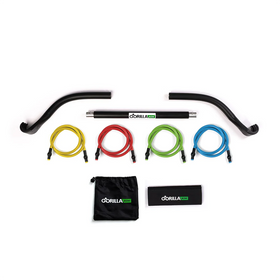
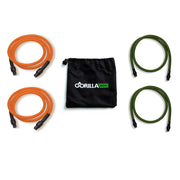
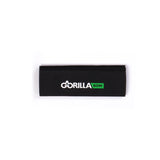
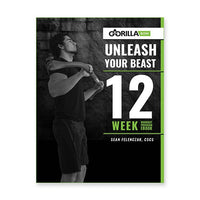
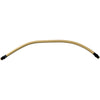



Leave a comment